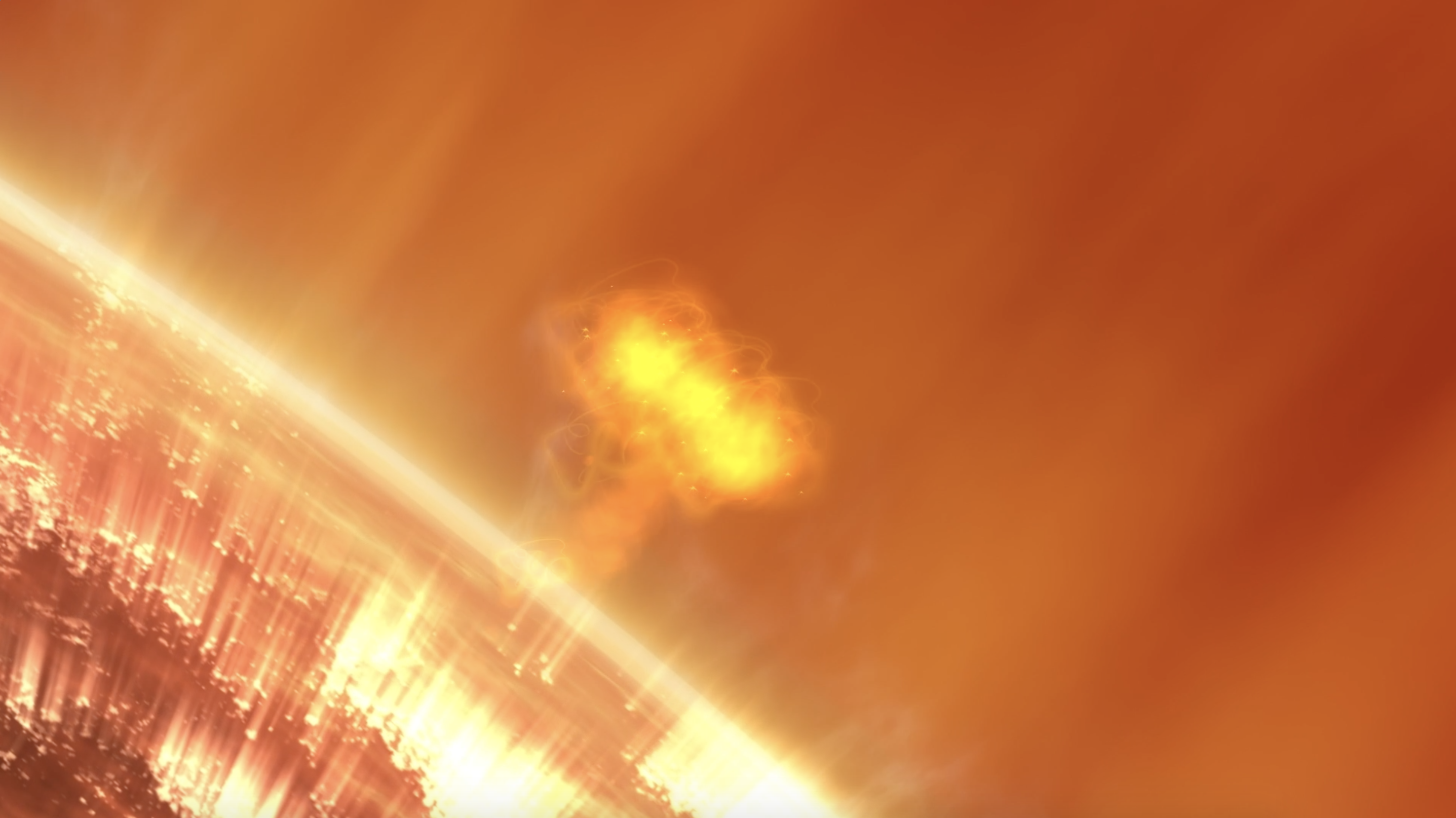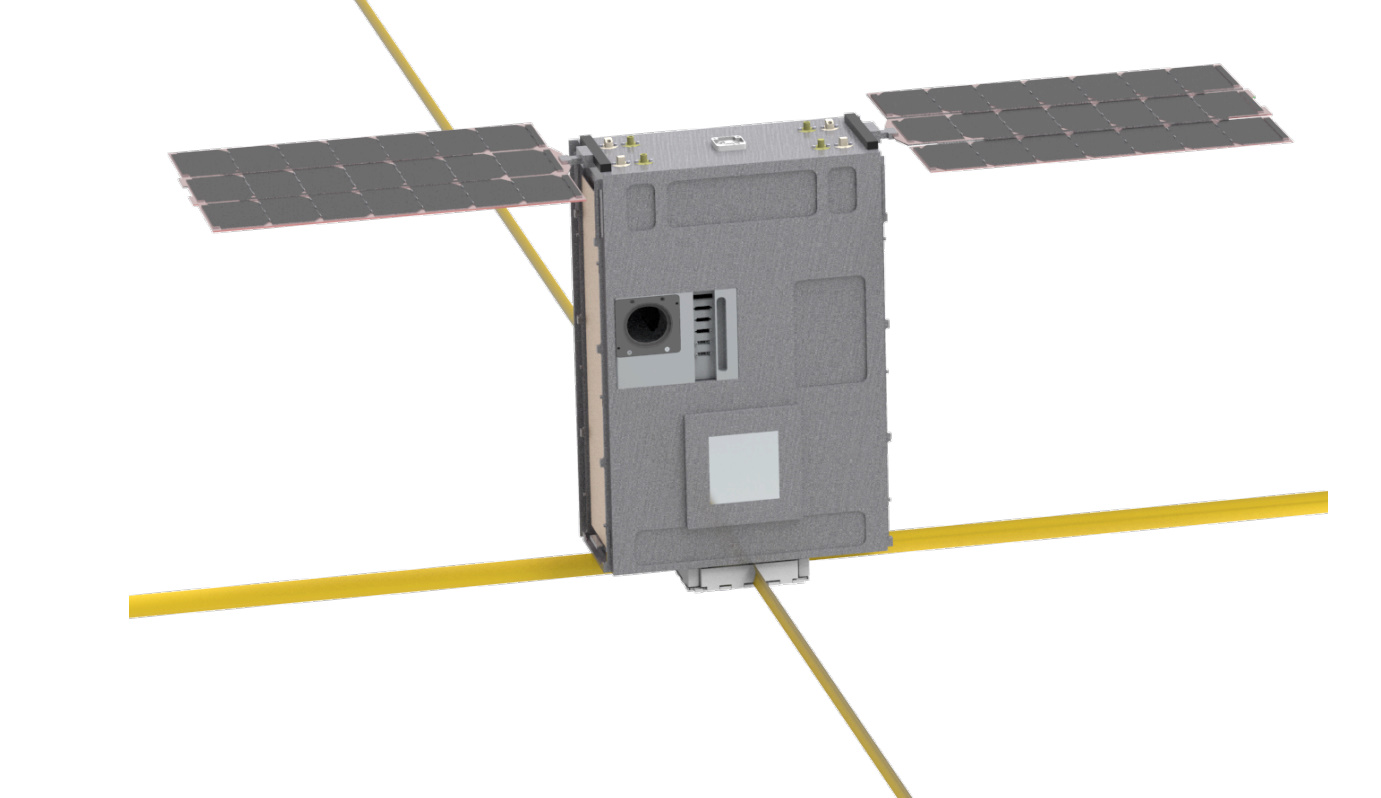For NASA's next sun mission, 6 tiny spacecraft will work as one massive telescope

Want to build the largest radio telescope to fly in space? Here's an easier technique: Design six tiny satellites to fly in formation and work together.
That's the approach of a NASA's new Sun Radio Interferometer Space Experiment (SunRISE) mission, which is scheduled to launch no earlier than July 2023. SunRISE aims to help scientists understand the complex relationship between the sun's activity and a host of dangerous phenomena around Earth called space weather. The mission selection comes amid a burst of solar science and an emphasis on missions that incorporate space-weather prediction into plans for human spaceflight beyond low Earth orbit.
"We are so pleased to add a new mission to our fleet of spacecraft that help us better understand the sun, as well as how our star influences the space environment between planets," Nicky Fox, director of NASA's Heliophysics Division, said in a NASA statement. "The more we know about how the sun erupts with space weather events, the more we can mitigate their effects on spacecraft and astronauts."
Related: Our sun will never look the same again thanks to two solar probes and one giant telescope
Scientists have watched the sun fling energy and material toward Earth in outbursts, and they have also seen the impacts that such events can have on orbiting satellites, particularly on communication and navigation instruments. But scientists don't yet understand the nitty-gritty details of the connection between solar outbursts and space weather phenomena well enough to predict space weather.
If all goes well, the $63-million SunRISE mission should help to bridge that gap.
The six telescopes that make up the mission are tailored to study the radio waves that the sun ejects during solar particle outbursts. In particular, SunRISE will target outbursts called coronal mass ejections, which can throw massive amounts of plasma, the soup of charged particles that makes up the sun, across the solar system.
Get the Space.com Newsletter
Breaking space news, the latest updates on rocket launches, skywatching events and more!
The toaster-sized satellites will spread out across about 6 miles (10 kilometers), orbiting Earth at an altitude of 22,000 miles (35,000 km). That orbit will keep SunRISE well above the ionosphere, which blocks radio waves of the relevant frequencies from reaching Earth.

From that perch, the flock of cubesats should be able to map the influence of the sun's magnetic field across space. They should also be able to gather the data scientists need to understand how different parts of a coronal mass ejection dramatically speed up and which such events are accompanied by bursts of radiation, which are vital clues for space-weather prediction.
"We can see a solar flare start, and a coronal mass ejection start lifting off from the sun, but we don't know if it is going to produce high energy particle radiation, and we don't know if that high energy particle radiation is going to reach Earth," Justin Kasper, a space scientist at the University of Michigan who leads the mission, said in a university statement. "One reason why is we can't see the particles being accelerated. We just see them when they arrive at the spacecraft, which isn't much of a warning."
That situation is inconvenient when it comes to satellites, but downright dangerous when it comes to humans venturing beyond the safety of Earth, hence the impetus to better understand space weather.
"Knowing which part of a coronal mass ejection is responsible for producing the particle radiation will help us understand how the acceleration happens," Kasper said. "It could also result in a unique warning system for whether an event will both produce radiation and release that radiation towards Earth or spacefaring astronauts."
- How the sun's magnetic field works (infographic)
- World's largest solar telescope produces never-before-seen image of our star
- Scientists' favorite sun photos by Solar Dynamics Observatory (gallery)
Email Meghan Bartels at mbartels@space.com or follow her @meghanbartels. Follow us on Twitter @Spacedotcom and on Facebook.
OFFER: Save at least 56% with our latest magazine deal!
All About Space magazine takes you on an awe-inspiring journey through our solar system and beyond, from the amazing technology and spacecraft that enables humanity to venture into orbit, to the complexities of space science.
Join our Space Forums to keep talking space on the latest missions, night sky and more! And if you have a news tip, correction or comment, let us know at: community@space.com.

Meghan is a senior writer at Space.com and has more than five years' experience as a science journalist based in New York City. She joined Space.com in July 2018, with previous writing published in outlets including Newsweek and Audubon. Meghan earned an MA in science journalism from New York University and a BA in classics from Georgetown University, and in her free time she enjoys reading and visiting museums. Follow her on Twitter at @meghanbartels.










